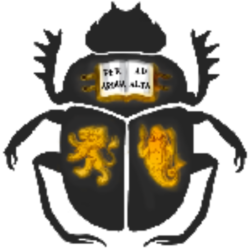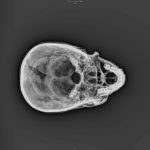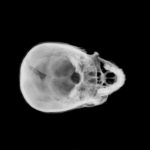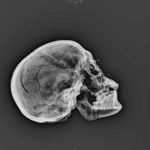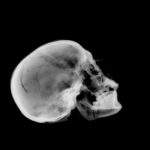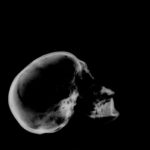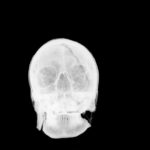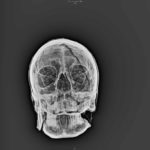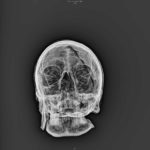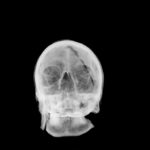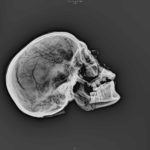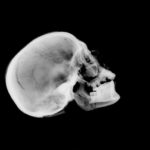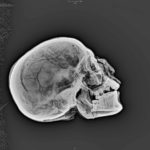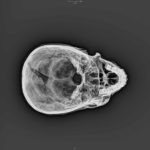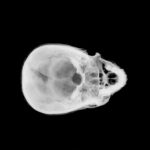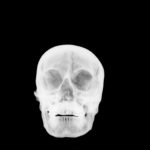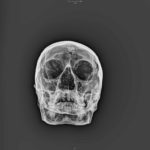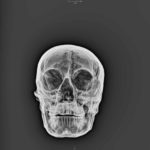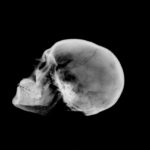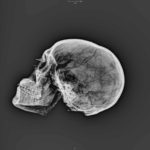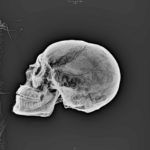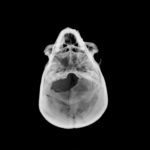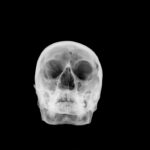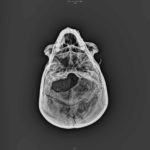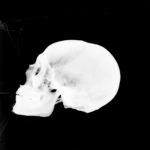Mummification: Techniques, development, and study
by Stephanie Boonstra, University of Birmingham
When entering a museum gallery, many visitors are instantly drawn to view the bodies of the ancient Egyptians with flesh, nails, and hair immaculately preserved from many millennia ago. These bodies were carefully preserved in ancient times by an embalming process called mummification.
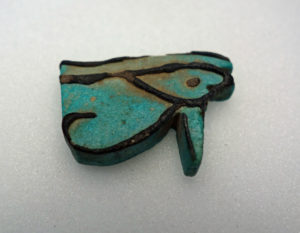
A wedjat eye amulet used for protection against evil spirits. ECM1429, Eton College.
The ancient Egyptians believed that it was vital to have an intact body in order to live eternally after death. Years before the first kings of Egypt, during the Naqada Period (c. 4000-3000 BCE), the early Egyptians found that bodies buried shallowly in the hot and dry sand would become naturally preserved. During this period, the Egyptians trialed burial techniques and some burials from Upper Egypt already had signs of their hands and necks wrapped in resin-soaked linen bandages. At this early stage, bodily preservation was rudimentary, but it laid the foundation for thousands of years of experimentation to perfect the art of mummification.
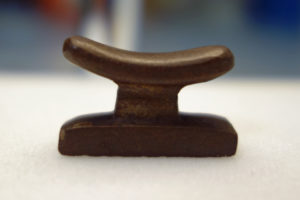
A headrest amulet to prevent the head from being separated from the body. ECM1418, Eton College.
By the New Kingdom (c.1550-1069 BCE), this embalming process was more complicated, effective, and time-consuming lasting approximately 70 days. First, the embalmer would remove the brain, which the ancient Egyptians deemed a useless organ, by inserting a long, sharp object through the nose and into the skull to pull the brain out. Then, they would make a small incision on the lower, left torso to remove the lungs, liver, stomach and intestines, which would be put in four separate canopic jars for preservation to be placed within the tomb. The heart, the centre of intelligence, thought, and emotion according to the ancient Egyptians, was left in the body. The body was then cleaned and packed with natron for 40 days to dry out. This was an essential procedure because any moisture would cause the body to begin decomposition.
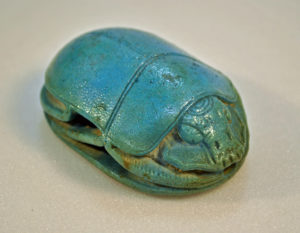
A heart scarab used to keep the heart light and pure in the afterlife, its base is inscribed with Chapter 30B from the Book of the Dead. ECM1606, Eton College.
After these 40 days, the body would be washed again with water and oils then the wrapping process could begin. The embalmer would start by wrapping the head and neck with linen bandages. Next, the fingers and toes would be individually wrapped, then the arms and legs, and finally the whole body. The embalmers would place an assortment of small amulets (such as ECM1429) within the layers of bandages to protect the deceased from any malevolent spirits and to aid them into the afterlife. The wedjat eye, or Eye of Horus, would protect the deceased against any evil spirits. The heart scarab (ECM1606) would keep the heart light and pure in afterlife, while the headrest amulet (ECM1418) would magically prevent the head from ever being removed. After these amulets and others were placed, the body would be wrapped with a final layer of linen wrappings and then coated in a liquid resin that would act as a glue to keep the mummy intact. The mummified body would then be placed within a coffin inside a tomb to reside for the rest of eternity.
Two ancient Egyptian skulls from the University of Birmingham were x-rayed by Pieta Greaves at Birmingham Museum and Art Gallery in 2013. One had the skin and hair preserved, while the other did not. Below are a series of images showing the results of the x-rays and links to 3D models of the skulls themselves. Birmingham Egyptology would like to extend their thanks to Birmingham Museums Trust for giving them the opportunity of sharing this scientific analysis here.
A gallery of x-ray images from the first skull
Click here to download a three-dimensional model of the skull (WARNING: includes images of human remains)
A gallery of x-ray images from the second skull
Click here to download a three-dimensional model of the skull (WARNING: includes images of human remains)
A video showing the x-raying of the skulls by Pieta Greaves (BMAG), Sarah Chapman (UoB), and Carl Graves (UoB)
As well as x-raying the skulls, Carl Graves and Sarah Chapman also discussed the ethics of holding collections of human remains with Dr June Jones a Senior Lecturer in Biomedical Ethics within the Department of Primary Care Clinical Sciences at the University of Birmingham.
Further Reading:
Adderley, N. 2012. Scarabs: Appeals for Protection and Resurrection. In C. Graves and S. Gregory (eds.), Connections: Communication in Ancient Egypt. Birmingham.
Ikram, S., and Dodson, A. 1998. The Mummy in Ancient Egypt: Equipping the Dead for Eternity. London.
Midant-Reynes, B. 2000. The Prehistory of Egypt. Oxford.
